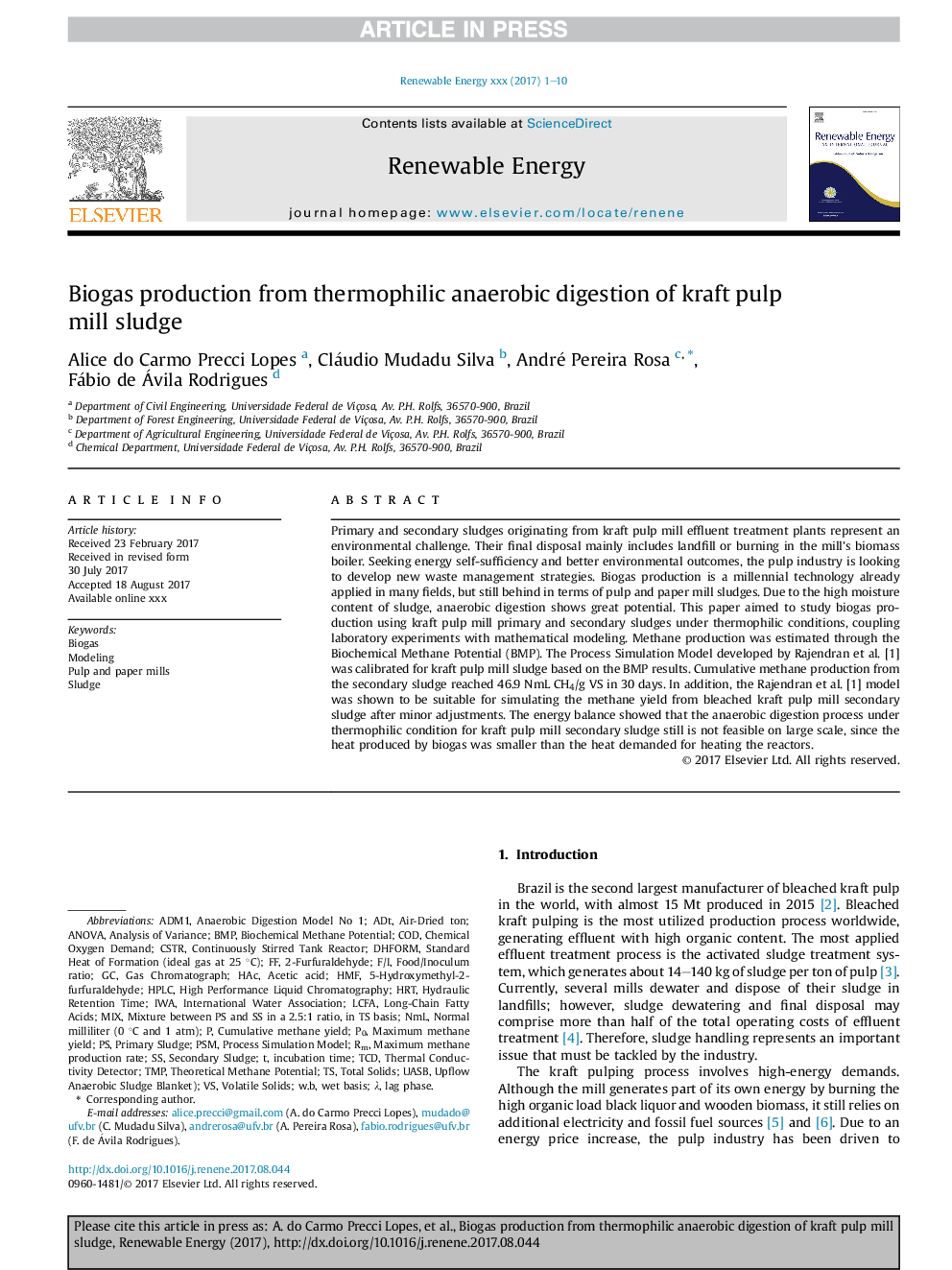| Article ID | Journal | Published Year | Pages | File Type |
|---|---|---|---|---|
| 6764421 | Renewable Energy | 2018 | 10 Pages |
Abstract
Primary and secondary sludges originating from kraft pulp mill effluent treatment plants represent an environmental challenge. Their final disposal mainly includes landfill or burning in the mill's biomass boiler. Seeking energy self-sufficiency and better environmental outcomes, the pulp industry is looking to develop new waste management strategies. Biogas production is a millennial technology already applied in many fields, but still behind in terms of pulp and paper mill sludges. Due to the high moisture content of sludge, anaerobic digestion shows great potential. This paper aimed to study biogas production using kraft pulp mill primary and secondary sludges under thermophilic conditions, coupling laboratory experiments with mathematical modeling. Methane production was estimated through the Biochemical Methane Potential (BMP). The Process Simulation Model developed by Rajendran et al. [1] was calibrated for kraft pulp mill sludge based on the BMP results. Cumulative methane production from the secondary sludge reached 46.9 NmL CH4/g VS in 30 days. In addition, the Rajendran et al. [1] model was shown to be suitable for simulating the methane yield from bleached kraft pulp mill secondary sludge after minor adjustments. The energy balance showed that the anaerobic digestion process under thermophilic condition for kraft pulp mill secondary sludge still is not feasible on large scale, since the heat produced by biogas was smaller than the heat demanded for heating the reactors.
Keywords
TMPInternational Water Association2-FurfuraldehydeNMLADM1IWAPSMf/ILCFATCDUASBHRTADTCSTRHMFthermal conductivity detectorAcetic acidLong-chain fatty acidsHACBiogasanalysis of varianceANOVAchemical oxygen demandTotal solidsvolatile solidsContinuously stirred tank reactorIncubation timehydraulic retention timeSludgePrimary sludgeSecondary sludgeMIxModelingBMPLag phasewet basisbiochemical methane potentialCodPulp and paper millshigh performance liquid chromatographyHPLCgas chromatograph
Related Topics
Physical Sciences and Engineering
Energy
Renewable Energy, Sustainability and the Environment
Authors
Alice do Carmo Precci Lopes, Cláudio Mudadu Silva, André Pereira Rosa, Fábio de Ávila Rodrigues,
